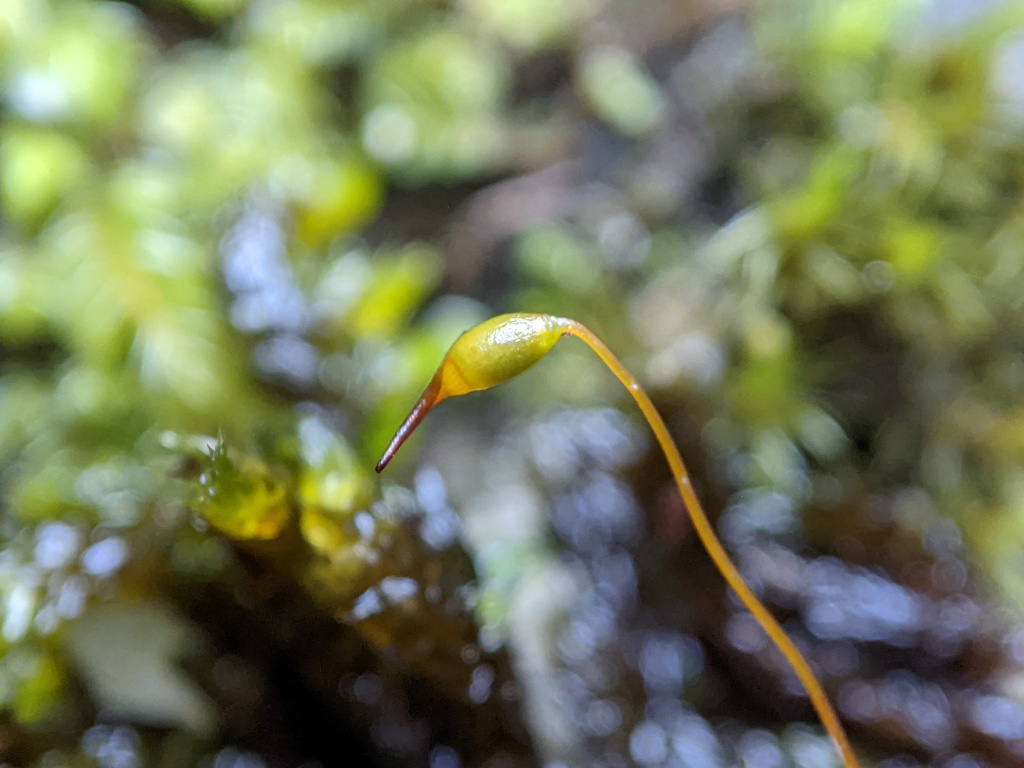Sematophyllum uncinatum
I.G.Stone & G.A.M.ScottAutoicous. Asexual propagules absent. Mats on soil, rock or logs. Stems to 8 cm long, irregularly and unequally subpinnately branched, red- to dark brown, with sparse red-brown rhizoids, central strand absent. Leaves homomallous, ovate-lanceolate, 1–2 mm long, 0.3–0.6 mm wide, concave, erecto-patent when moist, little altered when dry; apex broadly acuminate; margins entire or slightly denticulate toward apex, plane or narrowly recurved at base; cells narrowly linear-rhomboidal, 40–100 μm long, 4–5 μm wide, short and narrowly rhomboidal at apex; alar cells 3–5 in alar angles, rectangular, inflated, 40–105 μm long, 15–38 μm wide, hyaline or yellow with 1–3 rows grading into laminal cells. Setae 15–20 mm long, red, smooth. Capsules ovoid, horizontal to pendent, straight, 1.3–1.7 mm long. Operculum rostrate from conic base, c. 1–1.2 mm long.
CVU, GGr, EGU, HSF, HNF, VAlp. Beside fast flowing creeks or near waterfalls, mostly in wet forests, along and near the Great Dividing Range. Also WA, NSW and Tas. New Zealand and South America.
 Spinning
Spinning

